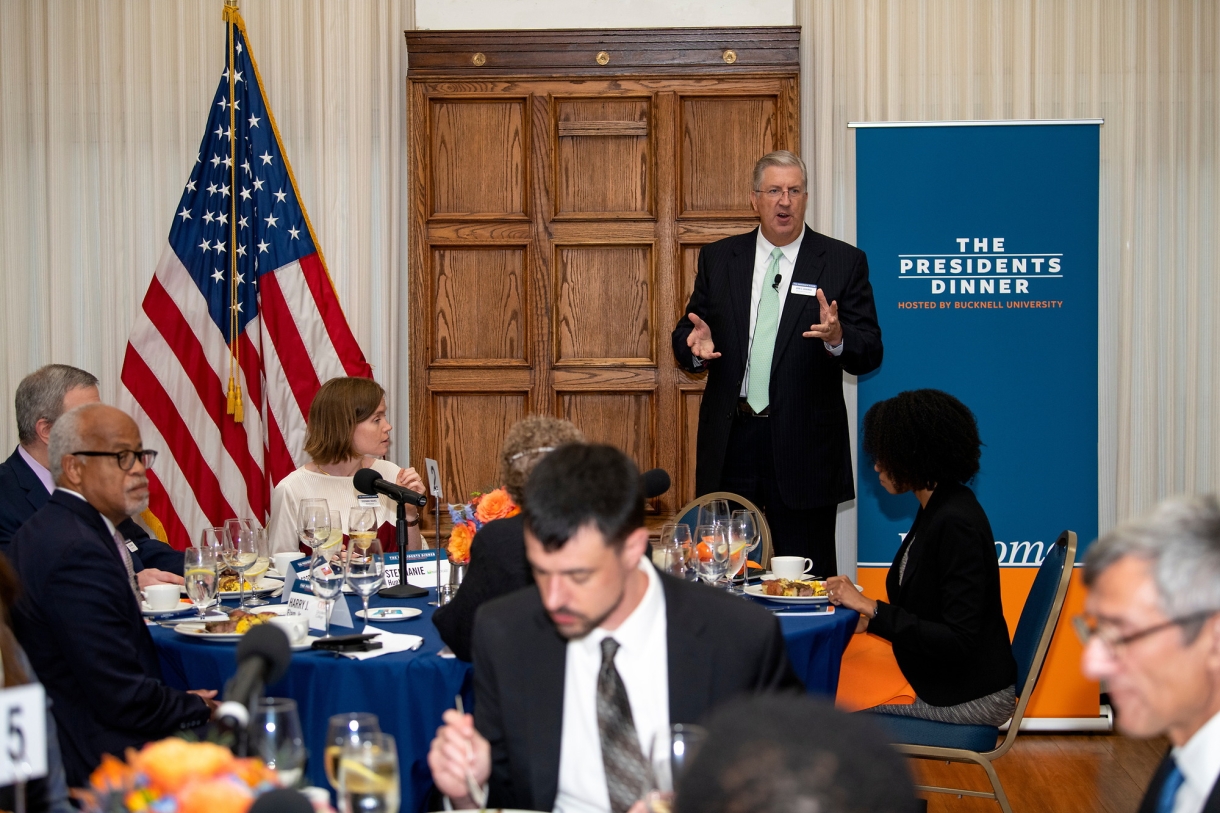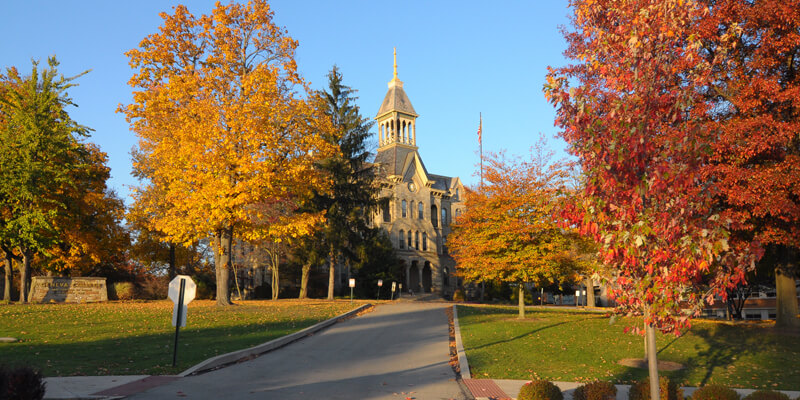-
 Published:
Published:At The Presidents Dinner in Washington, D.C., last week, 13 college presidents gathered with national media outlets to engage in organic conversation about higher education and some of today’s most pressing issues. “The undertone I get is that higher ed should fix the inequality that is devastating this country, and we do have an important role,” Wellesley College President Paula A. Johnson said. “The question is, what is that role, what is the organization that we actually create, and what is the momentum and power that we might have that we don’t yet quite recognize today?”
-
 Published:
Published:Between 2012 and 2021, both Geneva and Allegheny lost around a quarter of their undergraduate enrollments, according to Department of Education data. Free tuition policies can attract students and help them understand that they will pay less than the sticker price for their education, said Phillip Levine, a Wellesley College economics professor who studies higher education pricing.
-
 Published:
Published:“We cannot talk about reparations and healing of any kind without addressing and redressing the worldwide desecration and dishonor of African sacred cosmologies — our eco-centered, eco-conscious, and cosmic way of life — our right to live — to be and breathe,” Dr. Liseli Fitzpatrick said to delegates and members of the Permanent Forum. Fitzpatrick is a Trinidadian professor of Africana Studies at Wellesley College in Wellesley, Mass., who attended the second session of the Permanent Forum due to her ongoing commitment to the healing, empowerment and liberation of African peoples. “Any exercise in reparations is futile if we do not recognize and respect the spirituality of African peoples and the inflicted injuries and injustices caused by centuries of spiritual and physical violence,” Fitzpatrick said in her remarks.
-
 Published:
Published:“Barbenheimer” became an accidental double feature because of the comical dissonance between atomic blondes and atomic bombs, but the two films share a key aspect: They’re allegories about the power and pitfalls of condensing cities into small, specialized utopias. Los Alamos and Barbie Land are campuses — call them MIT and Wellesley — with self-selected populations that are capable of extraordinary achievements. But these places can become segregated, out of touch, and even destructive to the outside world. As university campuses across America come to life for the fall, Americans might have something to learn from this summer’s movies.
-
 Published:
Published:Can Boston spur new development and economic activity in its struggling downtown while preserving its historic character? A new plan from the Boston Planning and Development Agency aims to do just that by streamlining a mishmash of building height restrictions, highlighting areas best suited for new development, updating design and architecture guidelines, and suggesting ways to re-energize public spaces left quiet after the COVID-19 pandemic. “Unless we want our iconic buildings to be continually covered in scaffolding and boarded up because masonry is crumbling off them, then we have to take action,” said Martha McNamara, board chair of Revolutionary Spaces — the steward of both the Old South Meeting House and the Old State House — and an architectural historian at Wellesley College specializing in 18th- and 19th-century New England.



